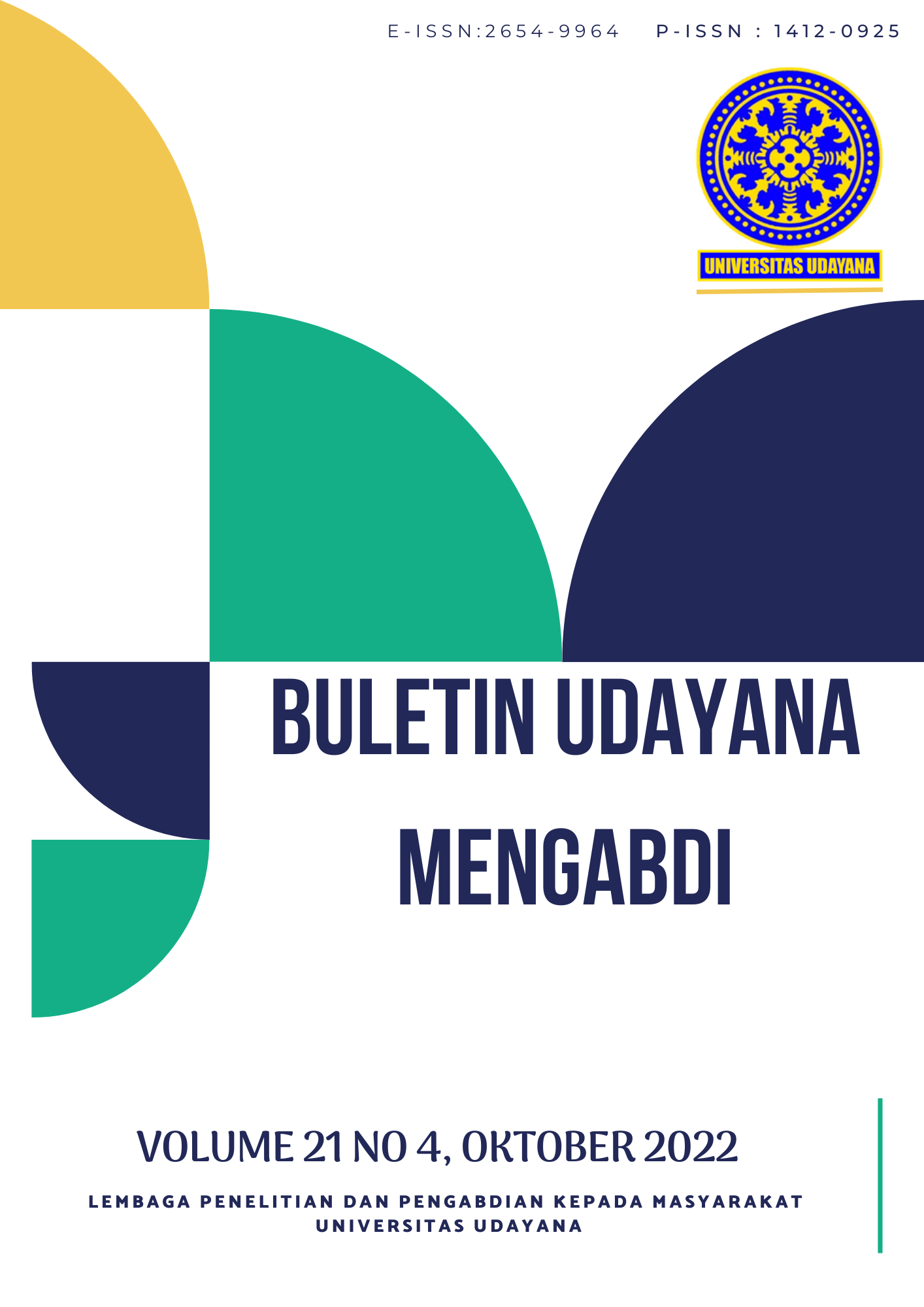PEMERIKSAAN WAKTU REAKSI VISUAL DAN SOSIALISASI PERILAKU SEDENTARI PADA SISWA SEKOLAH DASAR NEGERI 2 SUMERTA DENPASAR TIMUR
Abstract
The habit of lack of doing daily activities is often categorized as sedentary behavior where this sedentary behavior is said to have a bad impact on children. One of the impacts that arise from sedentary activity is a decrease in the child's reaction time. Reaction time is the length of time from the receipt of a stimulus to the appearance of a desired response. Visual reaction time is one of the variables that affect reading speed in children, starting from children getting sensory input in the form of letters then interpreting what letters they see until a response occurs, namely pronouncing the letters correctly. The purpose of the implementation of this service is to provide socialization of the impact of sedentary behavior and examination of visual reaction times in elementary school children. The specific target to be achieved from this activity is to find out the impact of sedentary behavior, it is hoped that parents and the school will provide activities in the form of physical activities that can also train children's reaction time. Based on the community service that has been carried out, the following results were obtained: (1) The sample participating in this service amounted to 71 people consisting of 24 grade 4 students, 17 grade 5 students and 30 grade 6 students, (2) Grade 4 students had grades the average speed of reaction time is 533.83ms. Grade 5 students have an average reaction time speed of 513.36ms. Grade 6 students have an average reaction time speed of 492.77ms.
Keywords: sedentary lifestyle, socialization, visual reaction time
Downloads
References
Harahap, H. and Cahyo, K.N., 2013. Pola Aktivitas Fisik Anak Usia 6, 0–12, 9 Tahun di Indonesia. Gizi Indonesia, 36(2), pp.99-108.
Hultsch, D., Macdonald, S. & Dixon, R., 2002. The variability in a reaction time performance and in younger and older adults. J Gerontol, II(101), p. se-ries B57.
Kementrian Kesehatan RI. Riset Kesehatan Dasar. Jakarta: Badan Penelitian dan Pengembangan Kesehatan Kementerian Kesehatan RI; 2013
NANDA, 2018. Nursing Diagnoses: Definition and Classification 2018-2020 Eleventh E. T. H. Herdman & S. Kamitsuru, eds., New York: Thieme.
Nikam, L. & Gadkari, J., 2012. effect of age, gender and body mass index on visual and auditory reaction time in Indian population. Indian J Physiol Pharmacol, 56(1), p. 9.
Riset Kesehatan Dasar Kementrian Kesehatan RI. 2013. Riskesdas 2013. Tersedia http://www.depkes.go.id/resources/download/general/Hasil%20Riskesdas %202013.pdf (diakses tanggal 7 November 2020)
WHO.nPhysicalIActivity.n2016.nAvailableIat:nhttp://www.who.int/topics/physical_activity/en/.n[Accessedi25iDesember 2021]
WHO. 2011. IMAI-Participants Manual-one day orientation on Adolescents Living with HIV. Communication.
Zhu, W. & Owen, N., 2017. Sedentary Behavior and Health: concepts, assessments, and interventions, United States of America: Human Kinetics.

This work is licensed under a Creative Commons Attribution-ShareAlike 4.0 International License.

This work is licensed under a Creative Commons Attribution-ShareAlike 4.0 International License.




.png)


1.png) GARUDA - GARBA RUJUKAN DIGITAL
GARUDA - GARBA RUJUKAN DIGITAL



